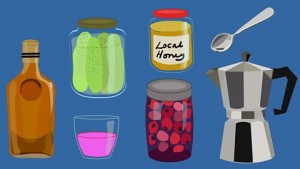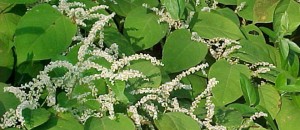A blog reader (thank you!) sent me the link to a French study that was recently published in JCI. It discusses the link between IgG myeloma and pathogens such as, ta da!, the Epstein-Barr virus, or EBV for short, the virus to which I was exposed while doing my doctorate at the University of Toronto and which I have always believed to be the underlying cause of my own, er, situation…
Before I forget, in all the excitement!, here’s the link to the (full) study: goo.gl/g73Sx8 And there, right at the end of the abstract, we learn that “a dysregulated immune response to infection may underlie disease onset and/or progression of MGUS and MM for subsets of patients.”
Bingo!
This isn’t the only study I’ve read or glanced at in the past week on pretty much the same topic, which, um, to be honest, I haven’t looked at in years now. So yes, there are others. But first, let’s have a look at this one.
The abstract tells us of the association between B-cell malignancies and EBV (also, HCV and H.pylori): “Subsets of mature B cell neoplasms are linked to infection with intracellular pathogens such as Epstein-Barr virus (EBV), hepatitis C virus (HCV), or Helicobacter pylori.” First point.
And here is another piece of the puzzle (see Introduction): “…viral and bacterial infection in patients can lead to the production of oligoclonal or mc Ig.” (Note: mc Ig = monoclonal immunoglobulins or antibodies.) Our clonal plasma cells produce a lot of these antibodies that thus far had been thought “not to have functional activity.”
But wait!, that may not be the case. Perhaps these antibodies do have a purpose after all. In previous studies, the French researchers in fact found that in Hepatitis C-positive patients these antibodies “almost always target the virus…” Aha. And that is an important third point. I don’t remember ever reading anything about MM cells doing anything remotely useful, so this was a big, no, it was a HUGE discovery for me.
Let’s keep going.
Their conclusion is that “an abnormal plasma cell response to infection could be the initiating event of some MGUS, SM, or MM cases.”
I can’t tell you how this made me feel, after years of having myeloma experts tell me that there could NOT possibly be any link whatsoever between my myeloma and my EBV infection. Vindication? Yeah, I guess.
The article at one point refers to a study discussing the case of a patient with a chronic HCV infection whose stage IIA MM regressed to MGUS.
Regressed to whaaat??????
Now that really caught my attention!!!!!!!! And so I rushed to read the case study, which is fully available online and is an Italian study, to boot: goo.gl/yeDwZvZ
This patient’s MM regressed to MGUS after just six months on an anti-HCV treatment. Six monthsssssss, that’s it???
I had to stop reading for a minute to let this all sink in.
How did I miss that 2013 Italian study???
Well, true, I can’t keep track of everything…I do have a life, after all!!! Besides, the important thing is that I finally did read it. Anyway.
So here’s the thing: IF transforming her MM back into MGUS was possible for an HCV patient, why couldn’t, theoretically, the same be possible for an EBV patient with SMM or MM? And even if a regression didn’t occur, what’s there to lose?
Get rid of the virus, get rid of the myeloma. Sounds simple. Too simple, probably. But…worth a try. (Important note: I don’t know how toxic the antiviral treatments are. More research AND my doctor’s advice needed, here, before doing anything too hasty…)
Now, as the authors suggest in the Discussion part, perhaps this could be feasible in the early stages of the “chronic underlying infection”…But they also add that it might even be effective in later stages of MM. Boy, that would really be something, wouldn’t it?
Here are some excerpts from the Discussion (my highlights): “Overall, our findings imply that chronic stimulation by infectious Ag may promote MGUS and MM in certain patient subsets. Importantly, some of the identified infectious pathogens (HSV, HCV, H. pylori) can be effectively treated. This observation has obvious clinical consequences, since the detection of MGUS or SM patients with an mc IgG specific for a treatable pathogen would allow the proposal of antiviral or antibiotic treatment for patients. If an underlying chronic infection were cleared early enough in disease progression, it could perhaps offer the tantalizing possibility to prevent MGUS transition towards SM and overt MM for the first time. In such cases, addition of antiviral or antibiotic treatment to current protocols might indeed induce disease regression and/or improve response to standard treatments, as reported for interferon-? treatment in HCV-associated MM.”
Hmmm, they say that “some of the identified infectious pathogens […] can be effectively treated,” but they don’t list EBV. Have to check on that one…
Okay, I’m stopping here for today. This is just the first part of a series of posts that I intend to write on this topic. I’ll re-read and, if I find something else of interest, finish writing about the JCI article in my next post…in any case, I have also downloaded a couple of other studies that might be of interest. Need more time, though…
Must rush off now. Ciaooooo!
Oh wait, let me leave you with some food for thought, hehe: curcumin inhibits EBV.
Bam!









 The description sounds quite innocuous, but in fact this plant is far from innocuous. It’s a terribly invasive, almost impossible-to-get-rid-of WEED that can take over huge expanses of land if unchecked, and its rhizomes can even cause extensive damage to building foundations, walls, and whatnot. Okay, well, there go my first thoughts of planting some in the back yard. Oooops, not happening!!!
The description sounds quite innocuous, but in fact this plant is far from innocuous. It’s a terribly invasive, almost impossible-to-get-rid-of WEED that can take over huge expanses of land if unchecked, and its rhizomes can even cause extensive damage to building foundations, walls, and whatnot. Okay, well, there go my first thoughts of planting some in the back yard. Oooops, not happening!!!